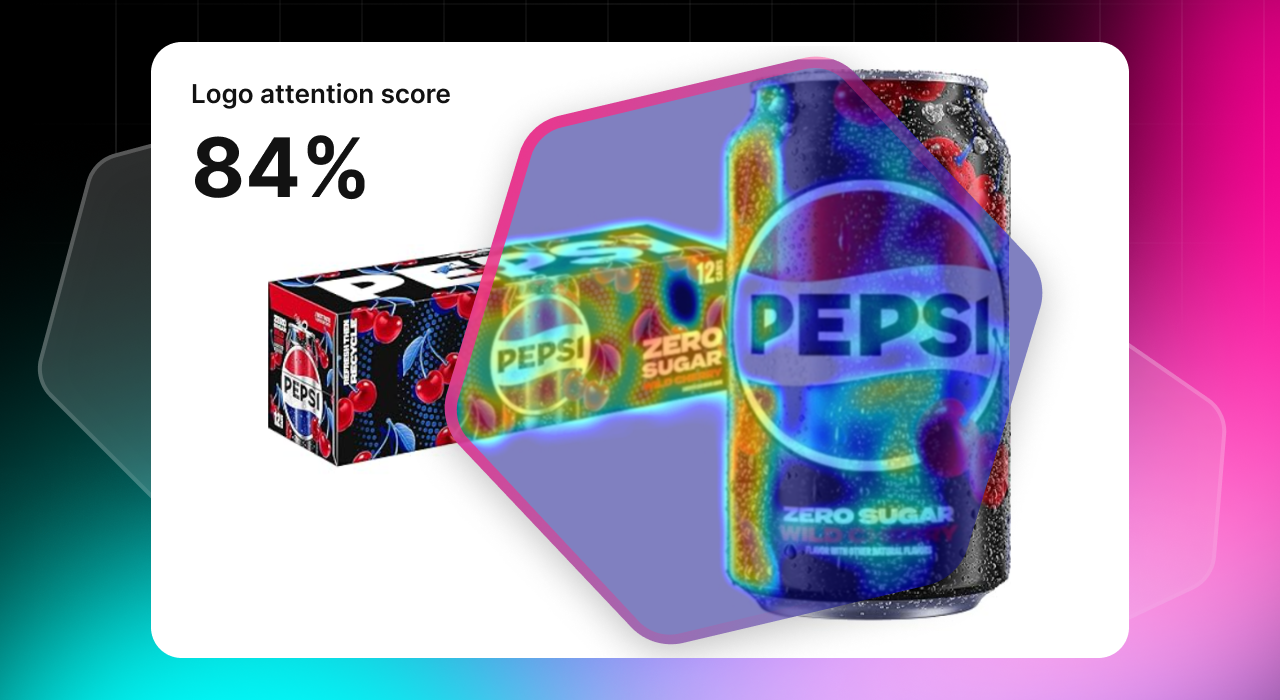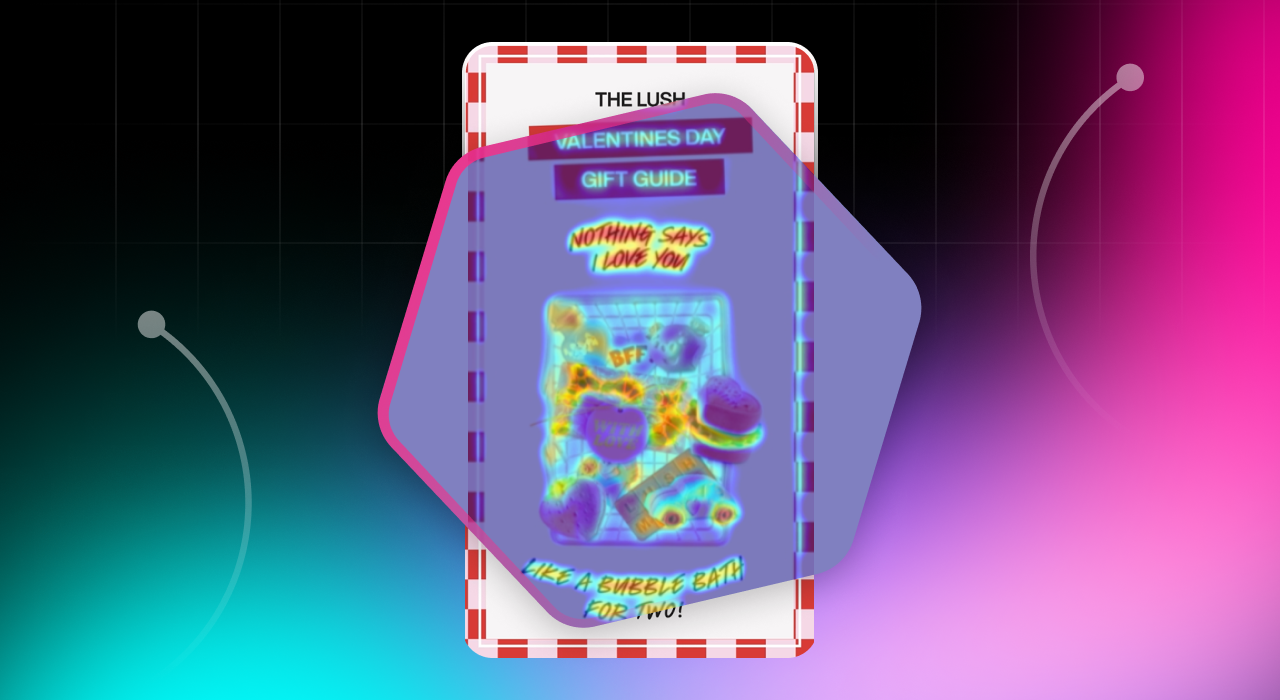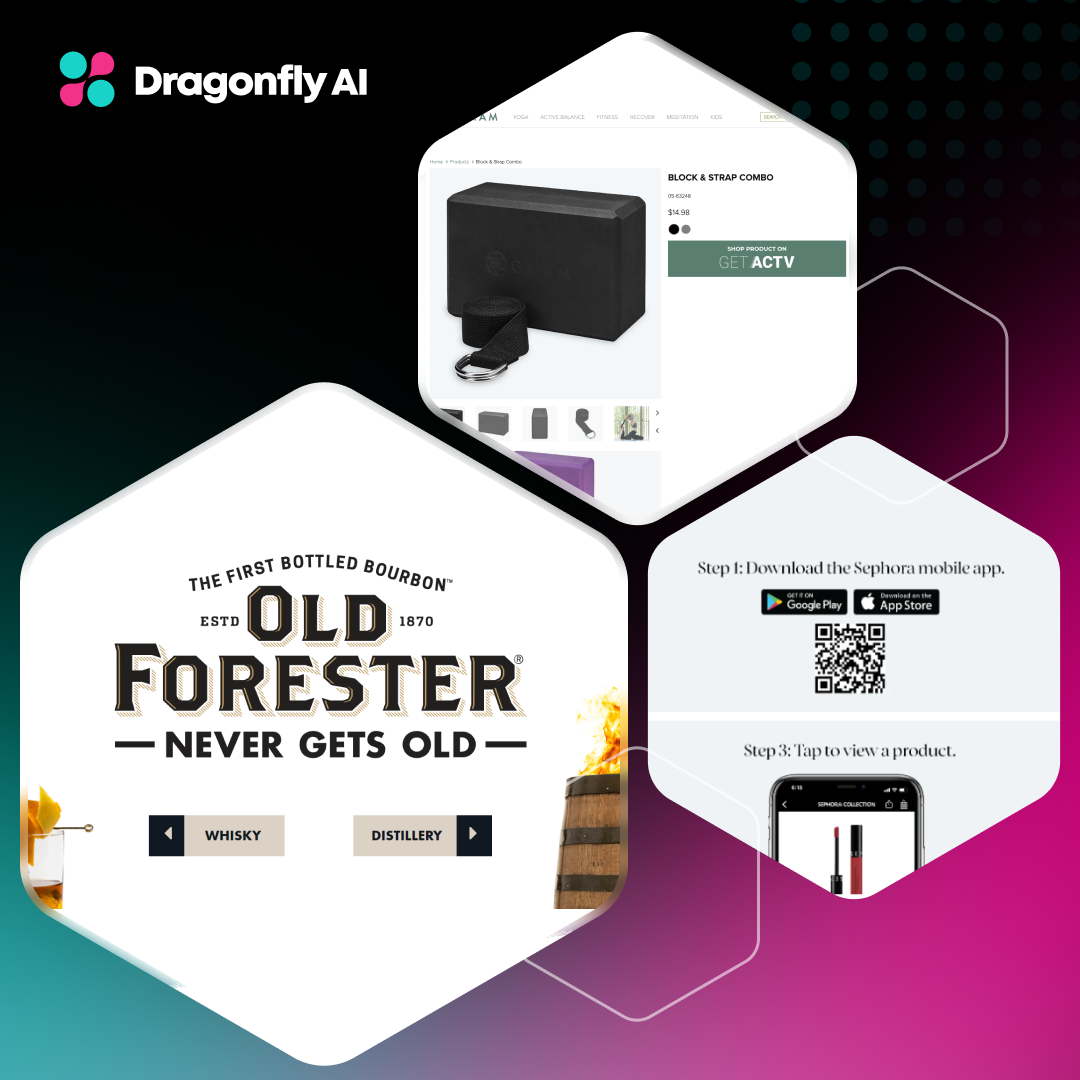The consumer-packaged goods (CPG) industry is entering a new era of creative production possibilities. As technology rapidly evolves at pace, the very nature of how CPG companies envision, design, test, and deliver products to meet customer desires is being revolutionized.
To stay ahead, brands will need to adopt AI and lean on creative tools and platforms—from AI and automation to virtual concept testing. They should also nurture organizational creativity to drive innovation.
The potential for CPG companies to enhance experiences while gaining market share and building loyalty through cutting-edge creative efforts has never been greater. Those who seize these opportunities will reap major rewards in the short and long term.
The future competitiveness of CPG powerhouses depends on the strategic embrace of new creative production capabilities such as creative testing.
The Evolution of Creative Production in CPG
Creative production in consumer-packaged goods has historically been a labor-intensive, time-consuming endeavor. Brands relied heavily on market research, focus groups, and outdated technologies to conceptualize and test new products and marketing campaigns.
-1.png?width=1280&height=700&name=Blog%20image%201%20(1)-1.png)
The process often took months or years to reap rewards. But recently, digital innovations have catalyzed seismic shifts across the entire creative process. Automation, big data analytics, artificial intelligence, virtual concept testing, instant attention prediction and creative software have all emerged as potential game-changers for CPG creative efforts. These technologies are significantly enhancing the production process, making it more efficient and transparent.
At its core, these advancements stand to accelerate idea generation. But they will also help:
-
Refine market insights
-
Enable predictive modeling of customer preferences
-
Augment human creativity
-
Allow rapid iteration of concepts
-
Sash production timelines by over 90% in some cases.
Such impact on product development cycles, marketing campaign success, and even organizational creativity culture will prove substantial. CPG brands now have unrivaled opportunities to produce concepts customers want more quickly while being more cost-efficient than ever.
Current Trends in Creative Production
Personalization and predictive analytics are two of the most disruptive current trends. These trends are contributing to greater efficiency in creative production. Armed with rich customer data and intelligent algorithms, CPG brands now customize everything from product variations to marketing messages and brand experiences, as well as unique micro segments on demand— all while modeling future interests.
Creative exploration of ingredients, packaging, and omnichannel content is expanding so much because of rapid virtual simulation. Agile methodologies now enable real-time consumer testing and feedback to refine concepts. And automated content creation assists teams in producing augmented assets at previously impossible speeds. The combined effect of these trends is enabling CPG companies to tailor creative efforts and respond dynamically like never before.

The Role of Technology in Creative Production
A host of advanced technologies are powering creativity for consumer goods like never before. Intelligent programs now act as creative sidekicks for teams, churning out iterations and tapping data to model success potential.
Virtual simulations allow endless concept tweaks at blinding speeds. Algorithms deliver on-demand personalized variations tailored to microsegments. And AR and predictive analytics unlock immersive experiences and future-gazing modeling abilities pre-launch. Rather than stifle imagination, these innovations are augmenting human ingenuity across the creative process.
Brands ahead of the trend
CPG brands are integrating these technologies to innovate and grow. For example, Procter & Gamble (P&G) integrates cutting-edge technologies into everyday products to improve consumer experiences. Innovations include products like a heated razor for a hot towel shave effect, a precision skincare system using camera optics and printing technology, and a smart home fragrance system. P&G's strategy is to combine its historical understanding of consumer behavior with breakthrough science and technologies to deliver transformative product innovations.
Moreover, CPG brands are also exploring next-gen ecosystems, with consumers at the center surrounded by core participants like technology and fulfillment partners, personalized advisory, and social media influencers. Such ecosystems aim to cater to dynamic consumer preferences, offering hyper-personalized products, ubiquitous deliveries, and seamless service across channels.
Automation with Generative AI
Automation and robotics, including collaborative robots (cobots), have been significantly adopted in the CPG industry. Cobots work alongside humans, taking on repetitive tasks and increasing productivity levels. It’s projected that in the near future, a significant portion of industrial robots will be cobots, with a substantial market value anticipated.
Digital Commerce and Emerging Technologies
Digital commerce is another area where CPG brands are making headway, with a shift from the traditional online-offline paradigm to more fluid consumer touchpoints, such as personalized online shopping experiences, mobile commerce apps, interactive social media campaigns, and AI-driven customer service chatbots. This transformation is leading to an integrated consumer experience across both digital and physical platforms.
Creative Process and Production Processes Redefined
The linear stage-gated models of old are transforming as new technologies reshape possibilities. Workflow optimization is crucial for enhancing operational efficiency and facilitating the integration of new marketing technologies. Today, agile methodologies enabled by automation, AI, and analytics innovations move the needle so constant concept iteration and consumer-driven refinement can happen with ease.
Decentralized co-creation that taps wider expertise further amplifies creativity. While still leveraging market research, predictive data now allows for superior and rapid success modeling. To optimize, brands should embrace flexible workflows, upskill creatives in emerging tools, implement advanced testing capabilities, and nurture a culture of experimentation and continuous improvement.
Rather than fixed formulas, adaptive processes capitalizing on expanded technological capabilities will drive greater innovation, efficiency, and customer centricity.
Exploring Creative Testing for CPG
To achieve creative confidence, the testing methods that CPG brands use need to be comprehensive, reliable, and founded on science they can trust.
There are countless eye tracking focused tools that can identify key areas of creative that can be improved to increase attention on brand.
The benefits of creative testing include;
- Instant insights
- Shorten design cycle
- Data driven design decisions
- Creative quality at scale
To name but a few. With the evolution of AI and keen product development creative testing has the capacity to constantly grow with brand needs. For example, through establishing benchmarking and emotion metrics.
Integrating Sustainability in Creative Production
With consumers voting values with dollars, sustainability concerns now steer the course of innovation too. Creative teams striving for magic must view decisions through a green-tinted lens. Should a package shape better allow for transport maximization? Could an ingredient swap cut processing energy demands in half? Might a small-scale pilot of reusable containers tap into an unmet need?
Brands like Lush have shown creativity and care paired can breed loyalty. Forward-minded CPG companies implement lifecycle analysis mechanisms into concept modeling algorithms. They nurture grassroots programs eliciting ground-up ideas from Gen Z teams.

And they incentivize marketing talent to interweave and reduce or reuse messaging into every scroll-stopping campaign visual. Sustainability and imaginative allure need not be mutually exclusive quests.
Evolving Creative Strategies
The creative industry is undergoing a significant transformation, driven by emerging technologies and changing consumer expectations. As we navigate this new era, it’s essential to evolve our creative strategies to stay ahead of the curve. One key aspect of this evolution is the seamless integration of AI tools into the creative process.
AI is no longer just a buzzword; it’s a reality that’s transforming the way we work. By adopting AI, creative teams can unlock new levels of efficiency, productivity, and innovation. From generative AI to machine learning, these technologies are enabling us to automate repetitive tasks, gain valuable insights, and create new, groundbreaking content.
However, the adoption of AI is not without its challenges. To truly harness the power of AI, we need to rethink our creative workflows and develop new strategies that leverage these technologies. This requires a deep understanding of AI tools, their capabilities, and their limitations.
One key area of focus is the development of creative concepts that resonate with different audience segments. By using AI to analyze vast amounts of data, we can gain a deeper understanding of our target audiences and create content that speaks to their needs, desires, and preferences.
Moreover, AI is enabling us to create personalized content at scale, allowing us to tailor our messaging to specific audience segments. This level of personalization is unprecedented, and it’s revolutionizing the way we approach content production.
As we move forward, it’s essential to stay ahead of the curve and continue to evolve our creative strategies. This means embracing new technologies, experimenting with new formats, and pushing the boundaries of what’s possible.
Leveraging AI in the Creative Process
The creative process is undergoing a significant transformation, driven by the adoption of AI tools. These technologies are enabling us to automate repetitive tasks, gain valuable insights, and create new, groundbreaking content.
One key area of focus is the use of generative AI to create new, innovative content. This technology is enabling us to generate ideas, concepts, and even entire scripts, freeing up our creative teams to focus on high-level thinking and strategy.
Moreover, AI is enabling us to optimize our workflows, streamline our processes, and reduce costs. By automating repetitive tasks, we can focus on the creative aspects of our work, rather than getting bogged down in administrative tasks.
However, the adoption of AI is not without its challenges. To truly harness the power of AI, we need to develop new strategies that leverage these technologies. This requires a deep understanding of AI tools, their capabilities, and their limitations.
One key area of focus is the development of creative concepts that resonate with different audience segments. By using AI to analyze vast amounts of data, we can gain a deeper understanding of our target audiences and create content that speaks to their needs, desires, and preferences.
AI is enabling us to create personalized content at scale, allowing us to tailor our messaging to specific audience segments. This level of personalization is unprecedented, and it’s revolutionizing the way we approach content production.
As we move forward, it’s essential to stay ahead of the curve and continue to evolve our creative strategies. This means embracing new technologies, experimenting with new formats, and pushing the boundaries of what’s possible.
By leveraging AI in the creative process, we can unlock new levels of efficiency, productivity, and innovation. We can create new, groundbreaking content, optimize our workflows, and reduce costs. The future of creative production is exciting, and it’s driven by the adoption of AI tools.
Predictions for the Future of Creative Production
Already AI programs are advancing from assisting creatives to autonomously designing products, campaigns, and experiences aligned to predicted consumer needs. As computing power expands and algorithms grow more sophisticated, near-term horizons promise even smarter creative platforms.
Generative design enabled through quantum machine learning may one day produce iterations at ungraspable scale to optimize emotional resonance. Blockchain could allow transparent yet secure consumer data sharing to inform ultra-personalized offer creation. And brain-computer interfaces may introduce literal thought-powered rapid prototyping.
While the full potential is still yet to be known, one certainty remains—technology and creative imagination will combine to bring concepts to life in ways not yet dreamed. And consumer connection opportunities will multiply exponentially as a result.
Preparing for the Future
Rather than reactively adapt, forward-focused brands will shape the production landscape. They’ll welcome unfamiliar approaches while empowering specialization across emerging domains. They’ll instill cultures celebrating creativity’s magic—found not in any tool but the human spirit.
Though new technologies promise enhanced efficiency and personalization, the leaders of tomorrow know it’s the spirit that needs nurturing if innovative ideas are to reverberate with consumers for decades to come.
Summary: The Future of Creative Production
The consumer-packaged goods industry sits on the cusp of unprecedented disruption in creative production capacities. With new technologies empowering more efficient concept iteration and massive personalization, the future gravitas of CPG brands hangs on leaders embracing these tools—not resisting inexorable change, but catalyzing within teams a culture that celebrates imagination, interrogation, and insight exchange.
Those integrating new methodologies with dexterity will shape experiences for decades to come. To be one of the brands leading the charge, see what Dragonfly AI can do for your creative production.



-1.png?width=1280&height=700&name=Blog%20image%201%20(1)-1.png)

